Ulm, Germany: the most detailed information about the city of Ulm, main attractions with photo and description, location on map.
Contents
Ulm (Germany)
Ulm is an ancient city in southwestern Germany on the outskirts the Baden-Wuerttemberg region next to Bavaria. Founded almost 9 centuries ago, this old imperial city is rich in tradition, history and sightseeing. Ulm is famous for the whole world high church spire (over 160 meters), with its grandiose Gothic cathedral – Münster and as the birthplace of the legendary Physicist Albert Einstein.
This city with a population of more than 100 thousand people is located on the left bank of the Danube at its confluence with tributaries and is major economic, educational and tourist center region. On the opposite shore is the city of New Ulm, which belongs to bavaria.
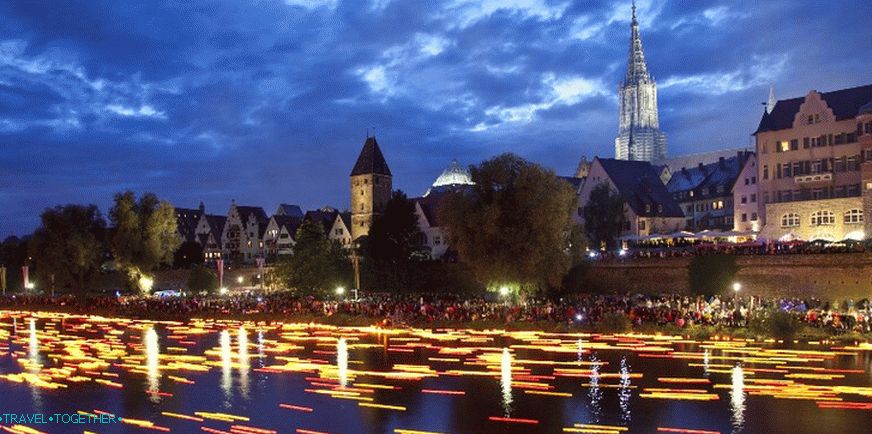 Danube River in Ulme
Danube River in Ulme
The city is surrounded by forests and hills that rise to a height. more than 600 meters and are the foot of the German Alps. Climate – temperate with warm summers and mild winters. In Ulm often happens thick atmospheric fog, especially in spring and autumn.
One of the symbols of the city is the sparrow. Their images and Sculptures can be found throughout the city. There is a legend that the sparrow told the engineers how to transport long wood beams for the spire of the cathedral.
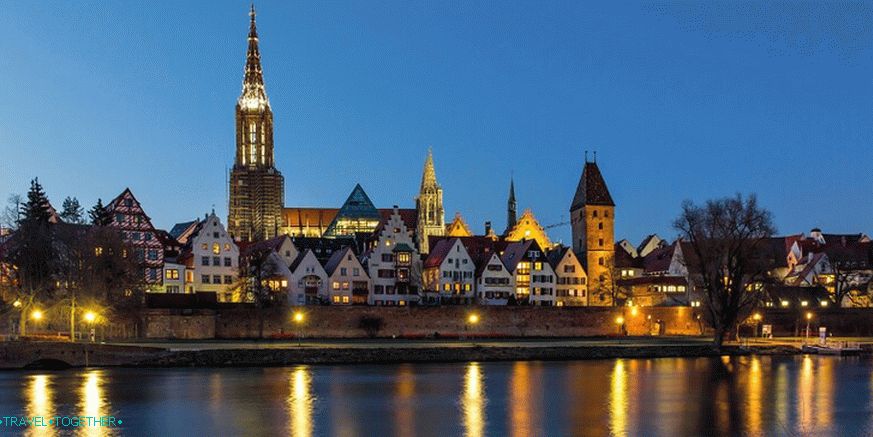 Panorama of Ulm
Panorama of Ulm
- Story
- How to get there
- Shopping and shopping
- Food and drink
- sights
- Video
- Maps and guides
- Comments and reviews
Story
The city of Ulm was founded in the 11th century. Although it is worth noting that already in The 9th century there was a residence of kings from the Carolingian genus. Already in the 11th and 12th centuries, the city became one of the most important centers. Duchy of Swabia. In the 12th century, the city was destroyed several times before founding during the struggle for the throne between the dynasties of Welf and Stauffen.
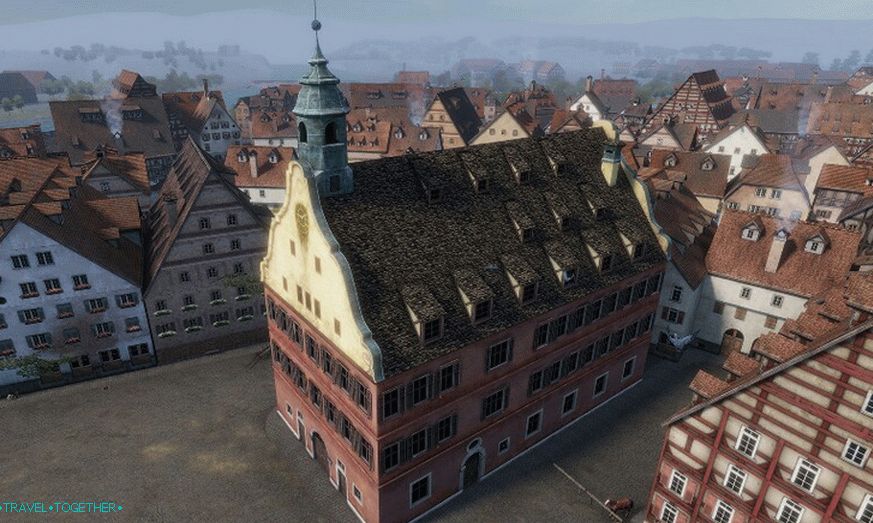 Medieval model cities
Medieval model cities
In 1181, Friedrich Barbarossa grants Ulm the rights of the free imperial city. The construction of the city fortifications begins. The city is becoming one of the main shopping and craft centers. Southern Germany. Interestingly, the people in Ulm lived quite prosperous. The huge gothic cathedral was erected mainly for money. townspeople. And the city itself received a double chain of fortifications. Until the 17th century Ulm grew and prospered. The decline of the city began after the discovery of America, which has changed the vector of development of trade, and began Thirty Years War.
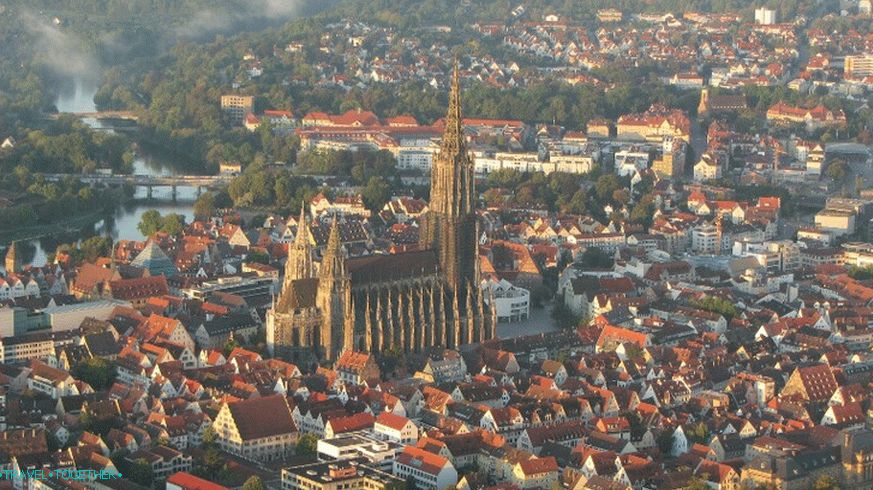 Historical Center Ulm and Mass of Münster Cathedral
Historical Center Ulm and Mass of Münster Cathedral
In the 18th century, invasions of French and Bavarian troops. In 1710, Ulm entered the Duchy Wurtenberg. And in 1803 he lost the status of an imperial city and joins Bavaria.
In the 19th century, the city became one of the most important industrial centers of southwestern Germany. During the Second World War was destroyed 2/3 of the buildings of the historic center. Ulm was completely restored in the 60s.
How to get there
There are two international airports near Ulm: Stuttgart (90 km or one and a half hours) and in Munich (150 km or 2.5 hours by train). The railway station is located almost in the city center is 10-15 minutes walk from Münster. Buy tickets to train and check the schedule can be on the website of the German Railways -https: //www.bahn.de. Ulm is also perfectly available for auto and buses located near the intersection of highways A7 and A8.
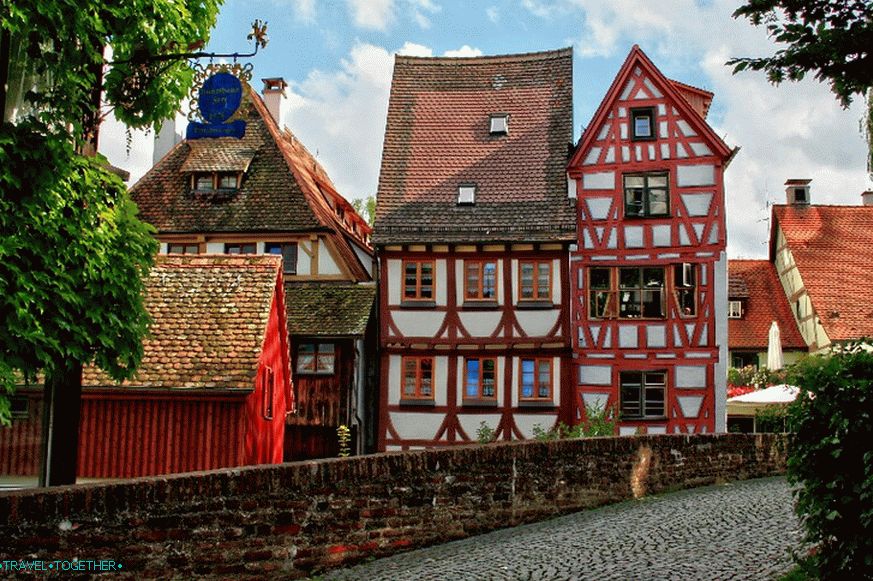 Ulm’s Streets
Ulm’s Streets
Shopping and shopping
The main shopping street starts from the station and continues until Ulm Cathedral. Traditionally for Europe and Germany a lot shops located in the historic center.
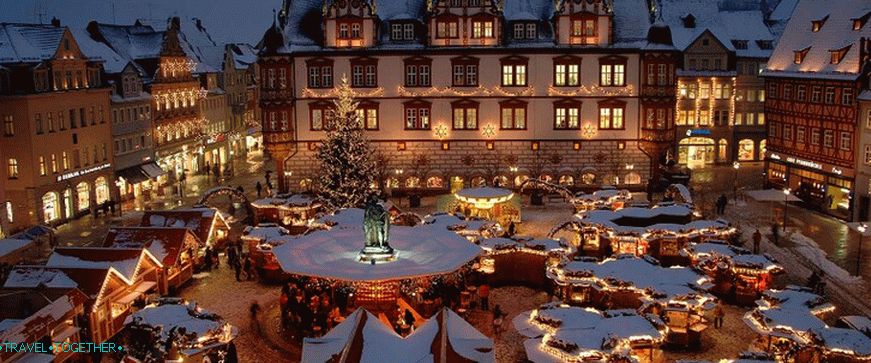 Christmas market
Christmas market
Food and drink
Most restaurants, bars and cafes are located in the old the city. Traditional German cuisine and delicious beer can be found at institutions of the original fishing quarter.
sights
Among all the attractions of Ulm stands a huge Gothic cathedral – Münster, whose spire is the highest among buildings of this type in the world – 161.53 m. Ulm Cathedral started building in the 14th century.
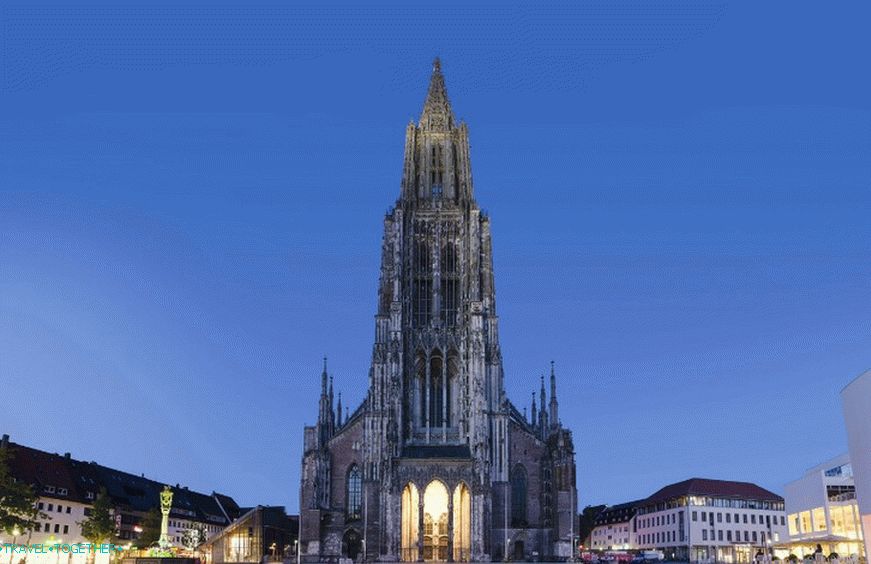 Munster or Ulm Cathedral
Munster or Ulm Cathedral
The first stone of the cathedral was laid in 1377. After finishing building it was believed that the cathedral could take up to 20,000 believers. Interestingly, the tower of the cathedral was completed only in 1890 year That is, the cathedral was actually built 513 years! On high 143 meters is an observation deck. To climb it need to overcome more than 700 steps. But the view of Ulm is worth it!
 Town hall
Town hall
The town hall was built in the 14th century by order of the guild of artisans. The original Gothic building in the 16th century received the features of an early Renaissance. Astronomical clock set in the first half 16 century.
 Crooked house
Crooked house
At the city wall is a curved house – one of the most Ulm’s interesting half-timbered buildings. The building was built at 14 century, and its subsequent expansion led to such architectural imbalance. Now in the building there is a hotel, which, according to the Guinness Book of Records, is the thinnest in the world.
 Fishing quarter
Fishing quarter
Fishing quarter – one of the oldest and most atmospheric neighborhoods Ulma, located on the river Blau, which flows into the Danube. Earlier there were quarters of artisans. Here you will find the intertwining of narrow streets, houses at the very water and the abundance of small bridges.
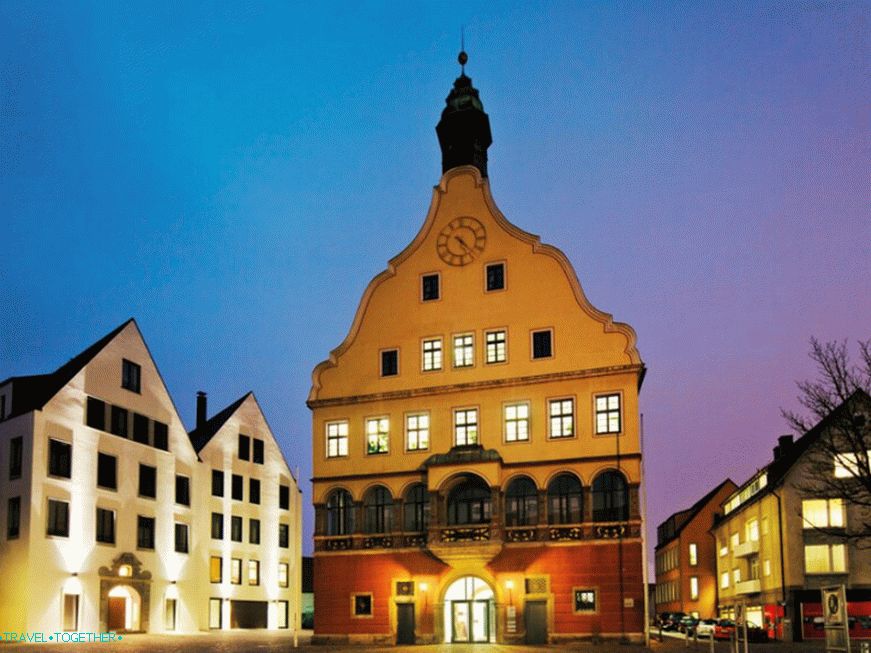 Oath house
Oath house
The Oath House is a historic building in Ulm, built in middle Ages. From the 14th to the 19th century, the building was an important trading place. AT mostly traded wine here. The building was restored in the 18th century. after the fire. Interestingly, on the penultimate day of July, the mayor of the city reports from the balcony on the activities of the last year and says historical oath. Now historical archives are kept here.
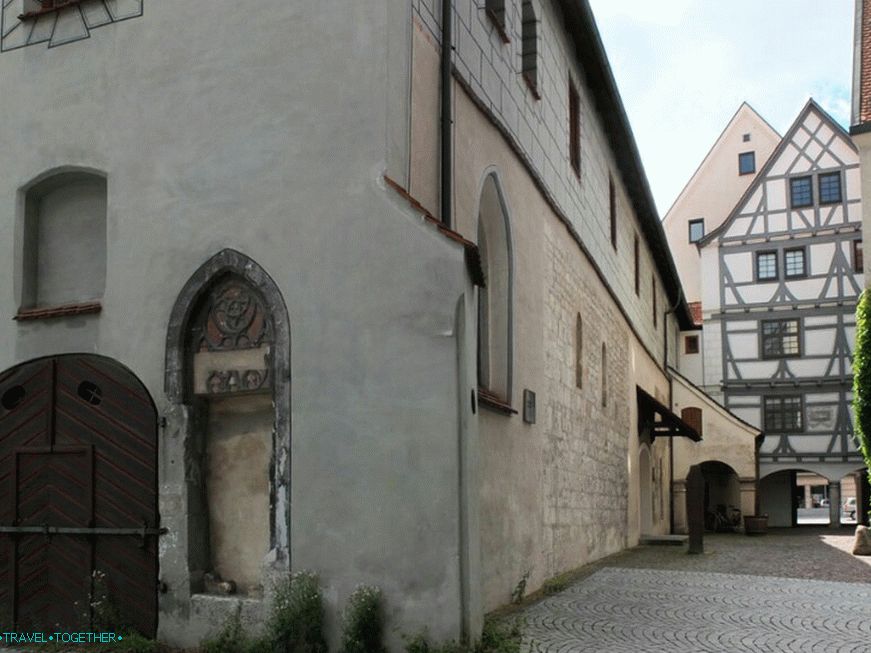 Green yard
Green yard
The Green Yard is one of the oldest places in Ulm, known since 12 century. The oldest remaining part dates from the year 1380. AT The center of this ensemble is a small chapel dedicated to patron of sailors.
 Butcher’s Tower
Butcher’s Tower
The Butcher’s Tower is one of the few surviving medieval towers of the old city. It belongs to the 14th century and was part of urban fortifications. The tower has a height of 36 meters and a deviation from 2 meter axis (3.3 degrees). According to the old joke here the butchers Ulma hid from the townspeople. That is why the tower got its title.
Seelesgraben can be viewed on 35 small houses built in the early 17th century for grave diggers and trenches.
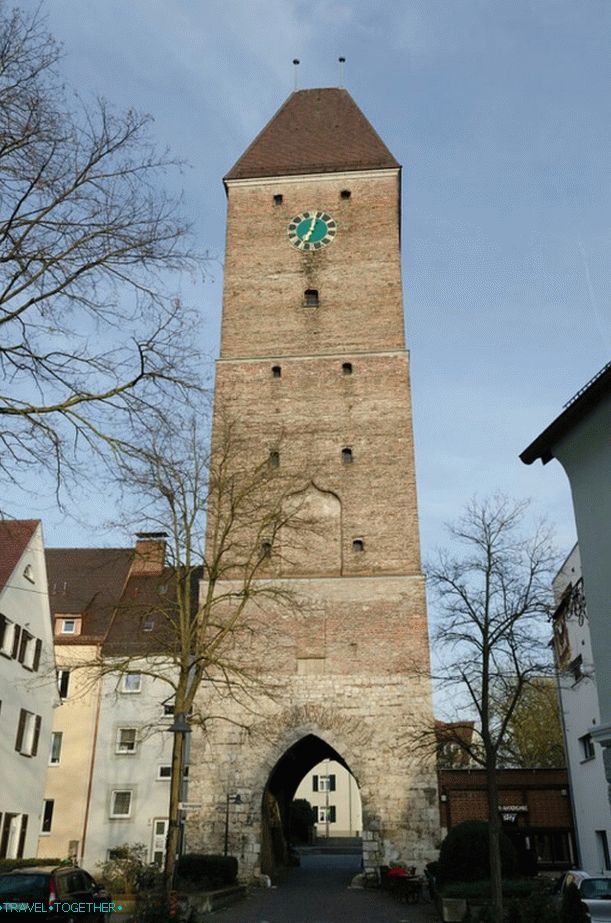 Goose tower
Goose tower
The Goose Tower is another of Ulm’s medieval towers, built in the 14th century and having a height of almost 38 meters. The old the roof was destroyed in the late 18th century during the shelling by Austrian by the troops. New was built in the middle of the 20th century. On the facade of the tower set the clock.
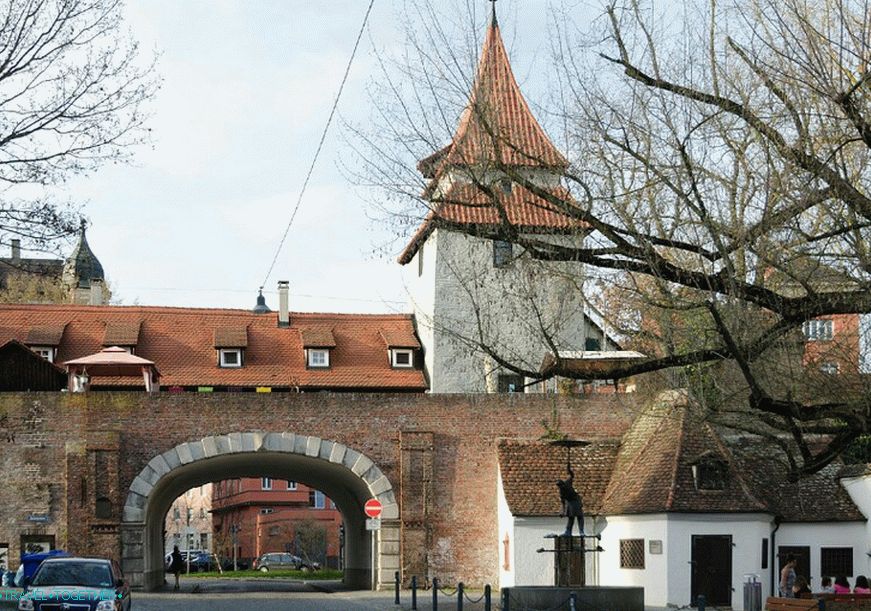 Sea tower with the gateway
Sea tower with the gateway
Not far from the houses of the diggers is the Sea Tower with city gate. It used to be a shelter for the sick and lepers cared for by nuns.
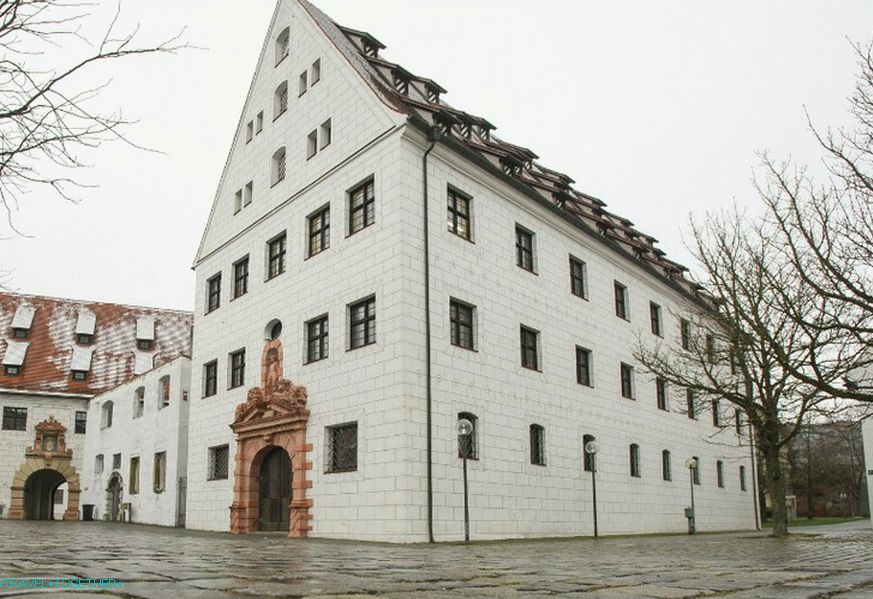 Armory building arsenal
Armory building arsenal
The building of the weapons arsenal is one of the most interesting. the historical complexes of Ulm, which is mentioned from the first half of the 15th century. Until the 19th century, these buildings were urban gun warehouse. Unfortunately, the historical exhibits here practically none, since during the Napoleonic wars the French the troops took out all the weapons.
Near the arsenal there is a sculpture and a fountain dedicated to the famous city-born physicist Albert Einstein. This unusual sculptural composition was made in 1984 year
Video
Maps and guides
Ulm Tourist Map






